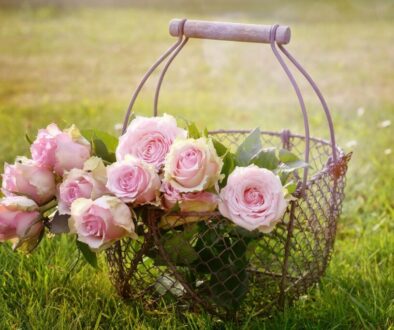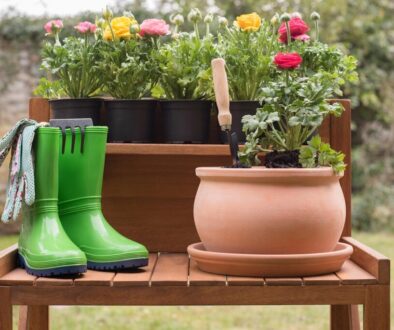Spring Planting Guide for Early Blooms: Your Path to a Colorful Garden
Spring is nature’s way of saying, “Let’s party!” And what better way to join the celebration than by planting for early blooms? Imagine stepping outside to a garden bursting with vibrant colors, fragrant flowers, and the cheerful buzz of pollinators. Sounds dreamy, right? Well, it’s totally within your reach! With a little planning and some know-how, you can transform your outdoor space into a springtime paradise. Let’s dive into your ultimate spring planting guide for early blooms, packed with tips, tricks, and all the details you need to make it happen.
Why Early Blooms Are Worth the Effort
Early blooms are like the opening act of a great concert—they set the tone for the entire season. Planting flowers that bloom in early spring ensures your garden wakes up from its winter slumber with a bang. Think crocuses, daffodils, tulips, and hyacinths. These hardy little wonders push through the cold soil to greet the sun, bringing life and color when everything else is still gray and dull. Plus, early blooms attract pollinators like bees and butterflies, giving them a much-needed food source after winter. By planting early, you’re not just beautifying your garden; you’re supporting the ecosystem too. Now, who wouldn’t want that?
Choosing the Right Plants for Early Spring
Not all flowers are created equal when it comes to early blooms. You need plants that can handle a little chill and still put on a show. Here’s a list of some spring superstars to consider:
Crocuses: These tiny powerhouses are often the first to bloom, popping up in shades of purple, yellow, and white. They’re perfect for borders or naturalizing in lawns.
Daffodils: Nothing says spring like a field of sunny daffodils. They’re deer-resistant and come in a variety of shapes and sizes.
Tulips: With their bold colors and elegant shapes, tulips are a spring classic. Plant them in clusters for maximum impact.
Hyacinths: Known for their intoxicating fragrance, hyacinths add both color and scent to your garden.
Pansies: These cheerful little flowers can handle cooler temperatures and come in almost every color imaginable.
When selecting plants, consider your hardiness zone and the specific conditions of your garden. Some flowers prefer full sun, while others thrive in partial shade. A little research goes a long way in ensuring your early blooms flourish.
Prepping Your Garden for Spring Planting
Before you start planting, your garden needs a little TLC. Winter can leave your soil compacted and nutrient-depleted, so it’s time to roll up your sleeves and get to work. Start by clearing away any debris, like fallen leaves or dead plants, that might have accumulated over the winter. This gives your new plants a clean slate to grow in. Next, loosen the soil with a garden fork or tiller. This improves drainage and makes it easier for roots to spread. If your soil is heavy clay or sandy, consider amending it with compost or organic matter. This boosts fertility and helps retain moisture. Finally, test your soil’s pH. Most early spring bloomers prefer slightly acidic to neutral soil (pH 6.0–7.0). If needed, adjust it with lime or sulfur. A well-prepared garden bed is the foundation for a stunning spring display.
Planting Tips for Early Bloomers
Now comes the fun part—planting! Timing is crucial for early blooms. Most spring-flowering bulbs, like tulips and daffodils, should be planted in the fall. This gives them time to establish roots before the ground freezes. But don’t worry if you missed the fall window. You can still find pre-chilled bulbs at your local garden center or plant early-blooming perennials and annuals in early spring. When planting bulbs, follow the “rule of three”: plant them three times as deep as the bulb is tall. For example, if a bulb is 2 inches tall, dig a hole 6 inches deep. Space them about 3–6 inches apart, depending on the variety. Water thoroughly after planting to help them settle in. If you’re planting pansies or other early-blooming annuals, wait until the soil is workable and there’s no risk of frost. These little troopers can handle cool weather but don’t like freezing temperatures.
 Caring for Your Early Blooms
Caring for Your Early Blooms
Once your plants are in the ground, they’ll need a little care to thrive. Water them regularly, especially if spring is dry. Early bloomers are working hard to grow and flower, so they appreciate consistent moisture. Mulching around your plants helps retain soil moisture and regulate temperature. It also keeps weeds at bay, which can compete for nutrients. If you planted bulbs, resist the urge to cut back the foliage after they bloom. The leaves need time to photosynthesize and store energy for next year’s flowers. Instead, let them die back naturally. For annuals like pansies, deadhead spent flowers to encourage more blooms. A little fertilizer can also go a long way. Use a balanced, slow-release fertilizer in early spring to give your plants a nutrient boost. With a little attention, your early blooms will reward you with a spectacular show.
Designing a Stunning Early Spring Garden
Creating a garden that wows in early spring is all about planning and creativity. Start by choosing a color scheme. Soft pastels like pink, lavender, and yellow create a serene, spring-like vibe, while bold colors like red and orange make a dramatic statement. Group plants in clusters or drifts for a natural, cohesive look. Mix different heights and textures to add depth and interest. For example, pair low-growing crocuses with taller daffodils or tulips. Don’t forget about foliage! Plants like hellebores and lungwort have attractive leaves that add greenery even when they’re not in bloom. Finally, consider adding some early-blooming shrubs or trees, like forsythia or cherry blossoms, for vertical interest. With a little imagination, your garden can be a spring masterpiece.
 Troubleshooting Common Spring Planting Problems
Troubleshooting Common Spring Planting Problems
Even the most experienced gardeners run into issues from time to time. If your early blooms aren’t performing as expected, don’t panic! Here are some common problems and how to fix them:
No Blooms: If your bulbs aren’t flowering, they might be planted too shallow or too deep. Dig them up and replant at the correct depth.
Pests: Squirrels and rodents love to dig up bulbs. Protect them by covering the planting area with chicken wire or using repellents.
Diseases: Fungal diseases like botrytis can affect early bloomers. Ensure good air circulation and avoid overwatering to prevent issues.
Leggy Plants: If your plants are tall and spindly, they might not be getting enough light. Move them to a sunnier spot or prune nearby plants to let in more light.
Remember, gardening is a learning process. Every challenge is an opportunity to grow (pun intended!).
 Extending the Bloom Season
Extending the Bloom Season
Why stop at early spring? With a little planning, you can enjoy blooms from early spring through late fall. After your early bloomers fade, plant mid-spring and summer flowers like peonies, irises, and daylilies. In the fall, add asters and chrysanthemums for a final burst of color. By staggering your plantings, you’ll create a garden that’s always in bloom. It’s like having a year-round flower show in your backyard!
Final Thoughts: Embrace the Joy of Early Blooms
There’s something magical about seeing the first flowers of spring. They’re a reminder that warmer days are ahead and that nature is full of surprises. By following this spring planting guide, you’ll be well on your way to creating a garden that’s bursting with early blooms. So grab your gardening gloves, get your hands dirty, and let the beauty of spring inspire you. Your garden—and your soul—will thank you!
Happy Gardening!





